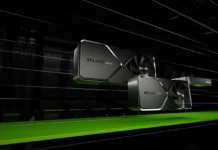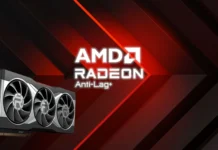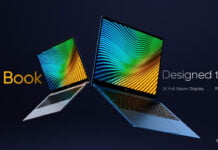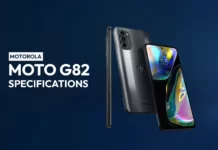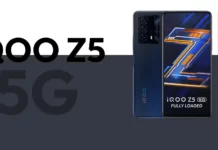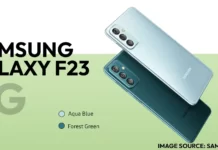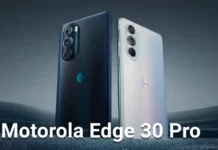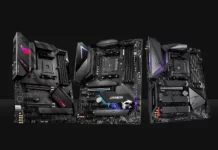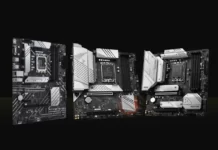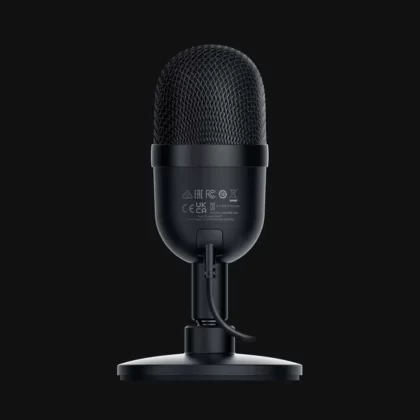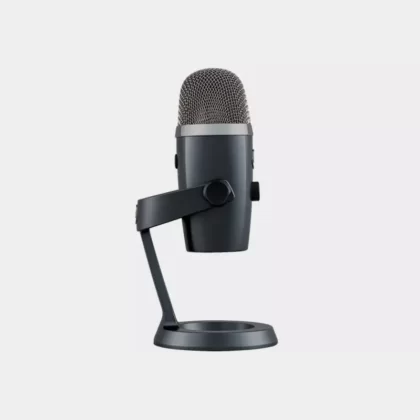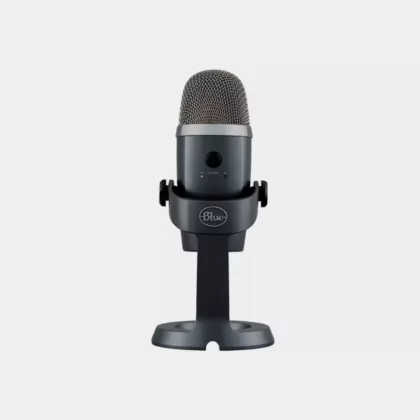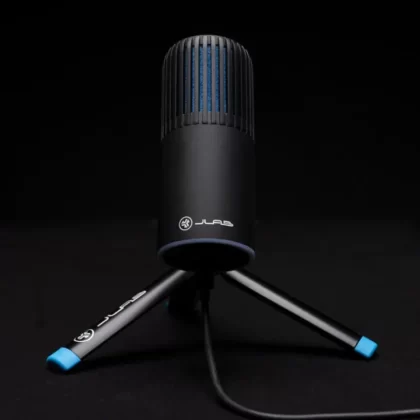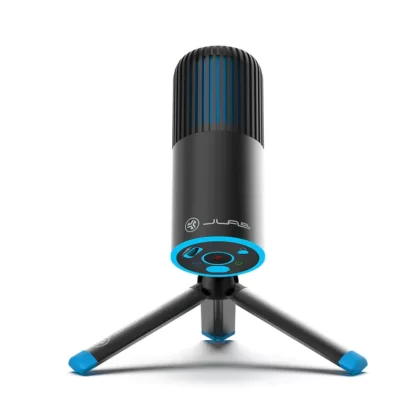Are you a fan of video games and looking forward to microphones at a competitive price? Then through this discussion, we are here to inform you about the latest microphone with the best sound quality and affordable price. So. let’s continue to read our article.
The low-priced microphones do not always have worse sound than their expensive complements. The times of drab, crackly audio may well be over, even for sub-$100 mics. Nowadays, users of microphones can take even a $50 microphone, plug it into their laptop, and record a great-sounding podcast. It offers the best sound quality that will bind your listeners and surprise them.
Few of the microphones come with multiple, and most of the microphone comes with a designer look. For decades, famous microphone maker companies have offered budget-friendly gaming, recording, and streaming configurations that sound amazing.
The economical microphone sounds excellent and displays even the most basic features to maintain low cost. Things like volume, gain control, or even a mute button can be easily seen on the microphone, requiring users to do any audio modification through third-party software like OBS or Xsplit. So, how can a $40 mic stand with some of the best microphones that could cost up to $300?
Besides the cheaper price part, it does not change the method of microphone testing. You still have to follow the same testing method that has been observed to test expensive microphones. We still seek excellent sound quality, form, usability, and build quality. All users add $100 as a maximum budget.
Best cheap microphone for streaming and gaming
1. HyperX SoloCast
The latest HyperX SoloCast microphone is all about offering what is the most important for users higher-fidelity voice recording for gamers on a budget. For less than $60, users pay for the compactness and ease of use.
Regarding sound quality, you regularly get what you pay for, but the HyperX SoloCast seems to take a sound over anything else approach. HyperX appears to have stripped down one of its QuadCast microphones to the essentials. It lacks a headphone jack, gains control, shock mount, and internal pop filter, and users miss the RGB lighting. But even though it is not as loud as HyperX’s other microphone offerings, the sound quality is unbelievable at this price.
When comparing the $160 HyperX Quadcast, the sound quality is extremely similar when using cardioid mode across both. The soloist only has the single cardioid polar pattern, unlike the four on the QuadCast mics. Both microphones have a 20Hz-20kHz frequency response and a 16-bit sample rate.
Without maintaining expansion, you cannot control the gain on the fly, which is difficult as it sounded too hot out of the box. Fluctuations are required on the software level, but setting it is easy.
Although the J-Lab Audio Talk GO and Razer Seiren Mini provide the best sound quality, the HyperX SoloCast still controls as the king of budget microphones, offering users the audio chops of its own costlier QuadCast S compatriot but for a fraction of the price.
The SoloCast chooses a pill-shaped design that sits unevenly half the size of the QuadCast S and is fairly parallel in features to the Razer Seiren Mini. It is a very modest look that deficiencies many of the HyperX charms we have come to know and love from many of its products. Instead of very hostile RGB, you have a single LED status indicator. There or no buttons or dials like stated before, just a tap-to-mute sensor.
The microphone can be easily drawn from the stand if you need to mount it on a boom arm. The USB Type-C connection makes for a painless lump and plays along with playing nicely on Mics and even a PlayStation 4; in case you do, you are streaming directly to Twitch from the cabinet.
You may giggle at the idea of the SoloCast having a mute button as a standout feature, but we have seen other budget microphones decline the ability to mute the mic to drive costs down. One such offender is the Razer Seiren Mini, which we will examine soon. This single-condenser microphone comes with a variable stand, boom arm, mic stands conveying, and tap-to-mute sensor.
Although not as loud as other HyperX offerings, the SoloCast takes the crown of best budget microphone, overwhelming the amazingly impressive J-Lab Audio Talk GO microphone. Though only $10 more expensive than the Talk GO, the SoloCast’s sound quality is more in line with microphones twice its price, which is a huge deal. Quality streaming apparatus at more reasonable charges means more people can easily create that content.
Specifications
| Polar patterns | Cardioid |
| Connectivity | USB |
| Recording sample rate | 48kHz |
| Frequency response | 20–20,000Hz |
| Features | Tap-to-mute sensor |
Why you should buy
- Sounds nearly identical to QuadCast Mic
- Great price
- Portable design
Reasons not to buy
- Limited feature-set
- Not as flashy
2. Razer Seiren Mini
Beyond your budget mics, the Seiren Mini’s design is the most eye-catching. The Razer Seiren Mini is a $50 budget microphone for streaming that might skimp on features but still distributes top-grade sound. The Seiren Mini’s delightful pill-shaped design comes in your choice of Black, Mercury White, and Quartz.
Like the HyperX SoloCast, many qualities were exposed away from the Seiren Mini to maintain the sound quality and the cost. There is no volume or gain dial or even a mute button. It is barren as they come, but for $50, it can be predictable.
The exclusive micro-USB cable Razer inclines to use on many peripheral devices is a bit of a pain. It retains you from using third-party cables because they do not fit. The worse thing is that if you lose that cable for whatever reason, the microphone will be useless until Razer’s replacement arrives.
You will love to see a ⅝ to ⅜ thread adapter so it could stand on most thriving arms, but it does not have one, sadly. Users will like the slanting stand and built-in shock base. A quality SoloCast lacks that is most useful if you run an attractive animated stream where accidental collisions are daily occurrences.
The Seiren Mini sounds just as good as Razer’s more exclusive Seiren provides. The Mini’s exclusive polar pattern does a better job of narrowing down background sound to focus on what’s in front of it, though it does sound a bit softer than the Seiren Emote at its default gain.
The Seiren Mini is perfect for Razer’s previously consistent line of microphones. It has an ultra-portable size, and its reasonable price offers another good option for a budget microphone to users. The lack of mute control and some other quality-of-life features will take few used to for any more pro folks, but they will be targeting their sights higher up the product load anyways.
The Mini, at just $50, sounds as good as its more exclusive brethren, attracting users who want a simple mic that looks elegant with excellent sound quality.
Specifications
| Polar patterns | Supercardioid |
| Connectivity | USB |
| Recording sample rate | 48kHz |
| Frequency response | 20–20,000Hz |
| Features | Tap-to-mute sensor |
Why you should buy
- Pill-shaped design
- Great sound
Reasons not to buy
- No mute button
- Proprietary micro-USB
3. Blue Yeti Nano
This miniature version of the classic Blue Yeti is the perfect microphone for those just starting with streaming. It has an excellent sound quality for a product under $100. Moreover, its small size and low-weight metallic structure make it easy to carry. The Yeti Nano is an outlier as the most exclusive budget mic on the list but offers economical mics per its features.
Its 24-bit, 48kHz recording sample rate is incredible, too; audio from the Nano and original Yeti exhibits that the previous was superior through a noticeable margin. It comes with two polar patterns: cardioid and omnidirectional, but the Blue Yeti Nano makes up for it with everything else.
The Nano is a trustworthy microphone that travels well and still offers that stellar Blue Yeti sound expected by users. Features-wise, the Yeti Nano is not as scarce as other microphones on the list. The 3.5mm output is super cooperative to receive exactly how you like it without needing any software. The volume switch for that output shares the same dial button as the mute.
Features like gain control are handled through the Logitech G Hub software. You will get more control over your mic settings without using third-party broadcast software like xSplite or OBS. Still, you can use those if you select another type of hardware-software.
Specifications
| Polar patterns | Cardioid, Omnidirectional |
| Connectivity | USB |
| Recording sample rate | 48kHz |
| Frequency response | 20–20,000Hz |
| Features | Zero-latency monitoring, mute & headphone volume controls |
Why you should buy
- Very small and light
- Easy to use
- Great sound quality
Reasons not to buy
- Relatively expensive for a ‘budget’ mic
4. Rode NT-USB-Mini
Rode creates qualitative microphones. There is no doubt, but the only issue is that its prosumer audio regularly requires a bit of financial investment. The Rode NT-USB Mini microphone is one of the best sub-$100 mics, so frequent microphone users can go with it.
Taking signs from smaller mics like the Razer Seiren Mini, Rode has many typical features in the standard mic for a more no-fuss, no-muss design approach. The Mini has made up of a pop filter to deal with your plosives and a well-ordered little removable magnetic stand that allows easy traveling.
Zero-latency monitoring mode eliminates the delay of your voice in playback. That’s important because it can be highly diverting to catch your voice a few milliseconds after speaking, depending on your settings, but it deals with all pretty well.
Rode has known for its top-tier audio gear. It is mostly advised for those looking to upgrade from semi-pro to pro streaming or podcasting. The price has always been a projecting point since Rode’s gear has always been slanted towards the serious prosumer. The Mini’s $100 price makes it a good choice for anyone seeking a qualitative microphone that travels well and maintains its usual Rode durability.
To analyze test recordings, you can get that the quality of the mic is good but not as good compared to the expensive microphones on the market. If your audio came out crisp and clear, though, you could choose some of the background buzzes for your very loud gaming PC. To make a comparative study, you can add cheaper mics like HyperX Solo cast, which is $40 cheaper than the NT, and a couple of premium mics to know the difference.
Apart from sounding incredible, the NT Mini is an easy-to-access mic that any beginner can use. It follows the same design philosophy as the other mini mics on this list by being compressed, traveling well, and seeming like a cool piece of tech. Speaking of easy, the Rode link software is a digital mixer that permits up to four NT Minis to be worked into a single computer without skipping any hoops.
Specifications
| Polar patterns | Cardioid |
| Connectivity | USB |
| Recording sample rate | 48kHz |
| Frequency response | 20–20,000Hz |
| Features | Zero-latency monitoring, mute & headphone volume controls |
Why you should buy
- Great sound
- Simple compact design
- Decent software
Reasons not to buy
- Software only works with NT Minis
- Picks up background noise
5. JLab Audio Talk GO
Relatively a beginner to the scene, J-Lab Audio might be well-known for affordable audio products like the cheapest headphones and speakers. Now it is trying its hand at microphones. The JLab AudioTalk GO comes up with two condensers with a resolution of 96kHz/24Bit. While the options for $100 + mics are huge, there are virtually no practical selections around this $50 price point.
It comes up with two-directional patterns that are cardioid and omnidirectional. Cardioid is not surprised, but using an omnidirectional feature is admirable for a microphone at this level. It means you can put the GO in the center of the table for group interviews or panel discussions.
The plug-and-play microphone and associated tripod come under a pound; the GO is surely a lightweight mic. The hard plastic frame creates worry about its durability over long-term use and travel, and maybe it will be a great idea to include a travel case or pouch, but it will be added to its price.
The Talk GO’s modest size makes it best for small spaces, which is particularly useful if your desk cannot accommodate a boom arm.
The powder blue inflections and the bright light wheel give the latest and unique design. Away from looking dope, the light wheel indicates to you what directional pattern mode you are using.
All the Talk series microphones have a simple smoothness that is not appreciable. The different colors indication gives individual signals. Blue means cardioid; green is omnidirectional, and red is mute. Holding down the mute button is how you change patterns and has proved pretty noob proof, which is all you can ask.
The Talk GO will shock a lot of people by the quality of it not sounding too bad despite having just two condensers. When users recorded some lines, their voice was thinner than they preferred, and my Ps dropped terribly. It can be preferred for daily use, like conference calls or podcasting, but if you want crisp, clearer vocals for music performers, you will have to enlarge your budget to promote to the Talk PRO.
The J-Lab Audio Talk GO may be the only $50 USB microphone you can buy apart from the aging Blue Snowball ICE that’s worth a damn. If you are beginning as a content creator with a low budget, then you will make a much inferior comparison to Talk GO’s size, sound, and price.
Specifications
| Polar patterns | Cardioid, Omnidirectional |
| Connectivity | USB |
| Recording sample rate | 96kHz |
| Frequency response | 20–20,000Hz |
| Features | Tripod |
Why you should buy
- Good starter mic
- Subtle RGB
- Portable design
Reasons not to buy
- Can sound tinny
Check out more:
- Top 5 best wireless gaming keyboards in 2022
- Top 5 gaming laptops in 2022
- Top 5 PC Cabinets in 2022
- Top 5 PCIe 4.0 SSD for gaming in 2022
- Top 5 AMD Motherboards in 2022
- Best 5 gaming headsets in 2022
- Top 5 Gaming CPUs in 2022: First Quarter of 2022
- Top 5 Best gaming monitors in 2022
- Top 5 best power supplies for gaming in 2022
- Top 5 Best Graphics Cards for Gaming in 2022
- Top 5 best gaming PC in 2022
- Top 5 Best Intel B660 Motherboards in 2022
- Top 5 Best lightweight gaming mouse in 2022
- The top 5 best FreeSync monitors in 2022
- Top 5 Best Budget B660 Motherboards (DDR4 Variant)
- Top 5 Best AMD B550 Motherboards in 2022

